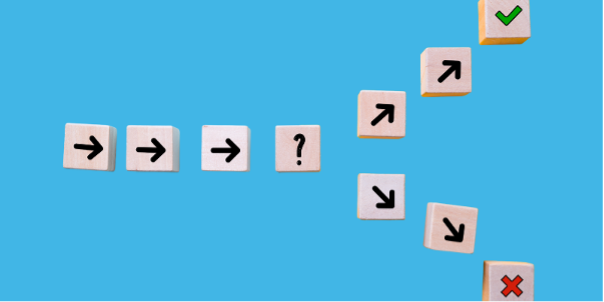No one likes hearing they’re not meeting their boss’s expectations, and neither did I.
My first response was that the criticism was unfair – all that work was on track.
I felt wronged and misunderstood.
William James, a pioneer in psychology, said, “The greatest weapon against stress is our ability to choose one thought over another.”
I took a breath and chose to look at it from her perspective. I got curious about where she was coming from and why it was reasonable for her to feel the way she did.
It suddenly started to make more sense. I had fallen into the trap of not adjusting how I managed upwards when my former boss moved on.
The work was on track, but the new boss wanted more frequent updates. There was also some truth to being late to meetings. I wasn’t late to all my meetings, but I had been late to a few she attended.

When I could think about my boss’s concerns more flexibly and not give in to those immediate fight, flight or freeze emotions, how to improve the situation became clearer.
It was a relief when she said her concerns were listened to, and she could see positive change.
Digging into those feelings and getting uncomfortable had been worth it.
Now imagine that situation on a broader scale where customers or the public believe something is a problem. However, you feel their perception is unfair or worse still, you write their opinion off as ill-informed.
Nothing is done, and the situation gets worse. It becomes a stand-off where you’re right, and they’re wrong. Then, it blows up and becomes an even bigger problem with stakeholders who are fired up and ready to fight.
When we’re more agile in our thinking and seek data from diverse sources, it allows us and others, to ‘stand back to see the bigger picture’ before stepping towards the detail and the solution.
Flexible thinking is valuable because it can help us respond to emerging issues earlier and keep adapting until we can find a way through change, uncertainty or ambiguity.
It’s like you’re like a human GPS recalculating new routes every time there’s a roadblock. You don’t just see one path; you see all the hidden shortcuts, back alleys, and scenic routes. While others are banging their heads against the wall, you turn the maze into a parkour course, bouncing between different perspectives and ideas like a pinball wizard.
However, if you have perfectionist tendencies, flexible thinking is about synthesising data and information to the point where you can realistically expect success.
You don’t want to keep bouncing around until you find the perfect path. It’s better to get on a path and work out how to make early sense of whether it’s heading in the right direction, so you have time to adapt.

Flexible thinking also opens possibilities when you lack control.
Jennifer Riel who teaches at the Rotman School of Management in Toronto provides a great example of this in the HBR On Strategy podcast episode Solving Problems with Integrative Thinking.
Riel shared the example of LEGO wanting to be involved in making an awesome movie that was also awesome for LEGO. The CEO realised he couldn’t control the creatives but could influence what happened before work started on the movie.
He got the movie makers to spend time with LEGO’s most committed, fanatical customers to understand what LEGO meant to them so they, too, would fall in love with LEGO and protect the brand. As a result, the movie makers discovered how evil it is to use glue and built this into the plotline to create a better, more engaging movie that protected the brand.
Here are four situations where you can experiment with flexible thinking:
- You’re faced with an emotionally charged situation, push yourself to take the opposite view and write down 5 valid reasons to support that view.
- If you feel wronged by someone, write down three plausible reasons why the person inadvertently or unintentionally wronged you.
- When given feedback you do not like, take time to reflect on ‘why would that person see it that way’ to understand their perspective.
- Next time you want to influence someone, think about what they could learn from other people who care about the issue as much as you do and loosen control to allow useful information to emerge.







